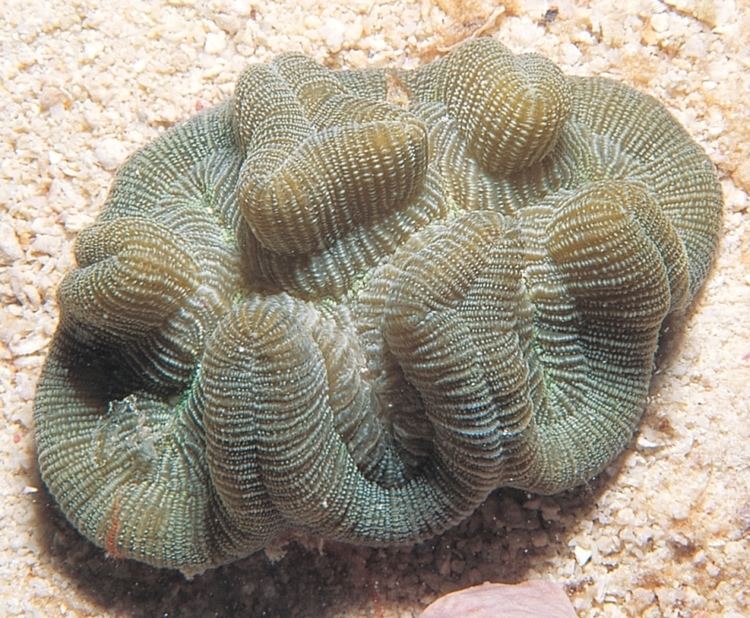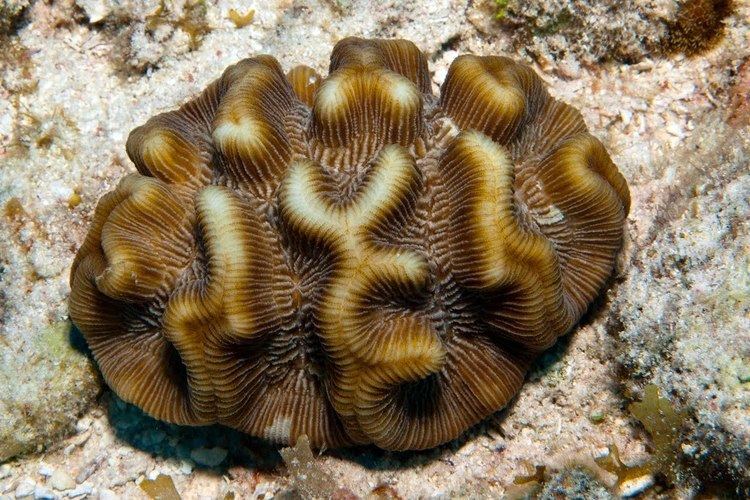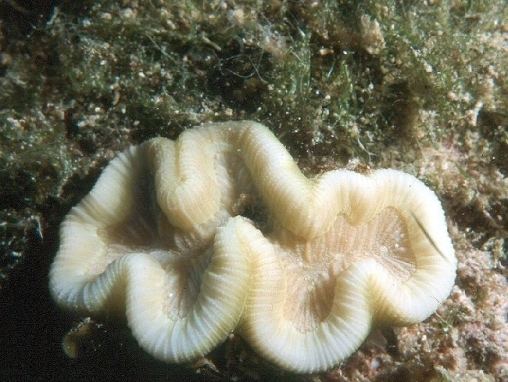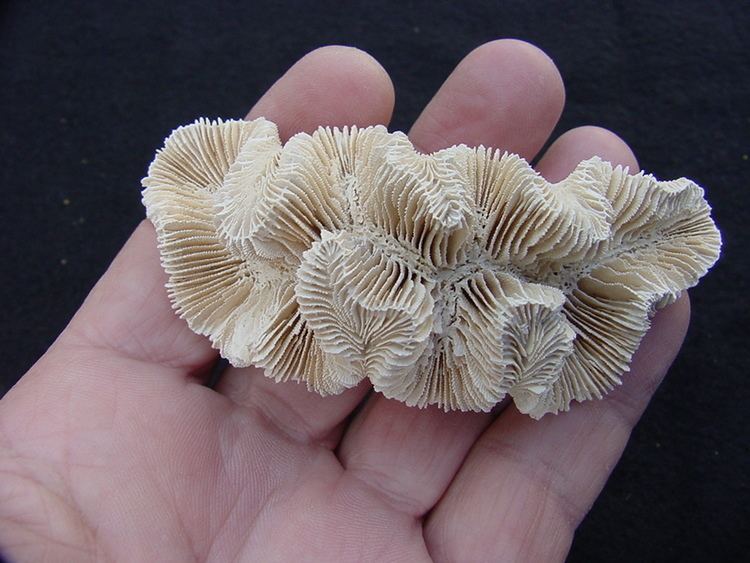Family Faviidae | Class Anthozoa Genus Manicina Rank Species | |
 | ||
Similar Scleractinia, Diploria clivosa, Mycetophyllia, Isophyllia sinuosa, Solenastrea | ||
Manicina areolata, commonly known as rose coral, is a colonial species of stony coral in the family Faviidae. It occurs in shallow water in the West Atlantic Ocean and Caribbean Sea, sometimes as small solid heads and sometimes as unattached cone-shaped forms.
Contents

Description

Manicina areolata has two entirely different growth forms. Some individuals form small, solid hemispherical heads while others are small, cone-shaped structures that are not attached to the seabed. The surface of the coral consists of long meandering walls with wide intervening valleys. The polyps sit in corallites (stony cups) in the valleys from which fine septa (transverse ridges) extend in several series up to the summit of the walls on either side. Often the whole coral consists of one long, convoluted valley, sometimes with side valleys. Where there is more than one valley, the intervening walls have grooves running along the top. The colour of this coral is yellowish-brown, tan or dark brown, often with the valleys and walls being contrasting colours. The polyps are only extended at night and their oral surfaces are often green.
Distribution and habitat

Manicina areolata is found in the Caribbean Sea, the Bahamas and Florida. The massive form is found on reefs attached to rocks but the unattached form is found on areas of broken coral fragments and on sandy or muddy substrates including lagoons and turtle grass (Thalassia testudinum) meadows. The depth range of this coral is from 1 to 65 metres (200 feet).
Biology

The unattached cone-shaped form of Manicina areolata can right itself if overturned by a fish, current or wave action. It does this by inflating itself by filling its interior with water and then emitting jets of water on one side to make the whole structure topple over. It is a slow process and is more difficult to achieve as the coral grows larger. This may be the reason that this coral seldom exceeds a diameter of 10 centimetres (3.9 in). This coral can rid itself of sediment that threatens to engulf it by producing mucus and sloughing this and the sediment that adheres to it like a skin. The tissues of this coral contain symbiotic unicellular algae called zooxanthella.
Manicina areolata is a hermaphrodite, the gametes are produced around the time of the full moon in May and June. Fertilisation is internal and the larvae are brooded inside the colony for two weeks before being released simultaneously on the night of the new moon. The larvae may drift planktonically or settle immediately.
